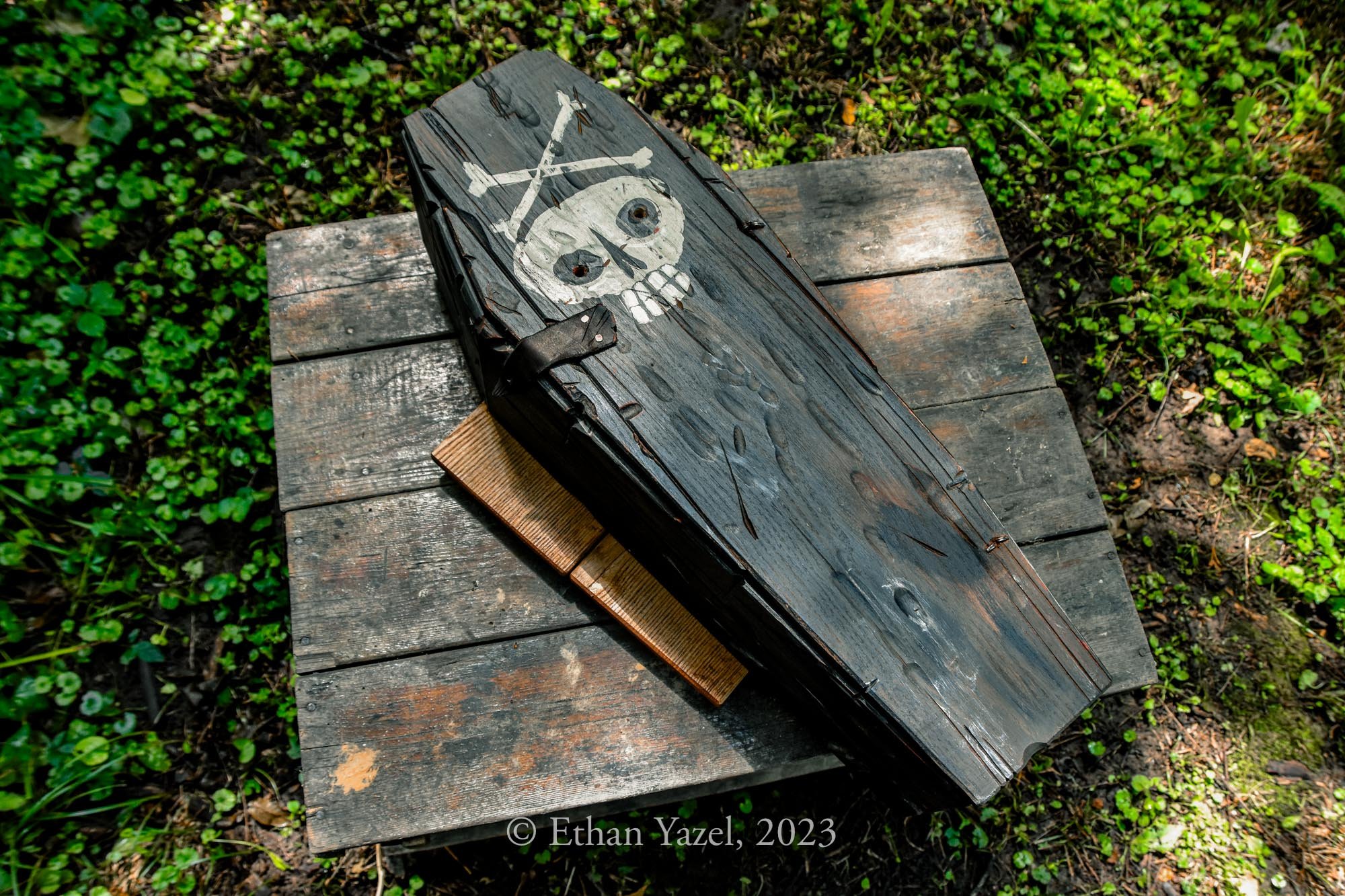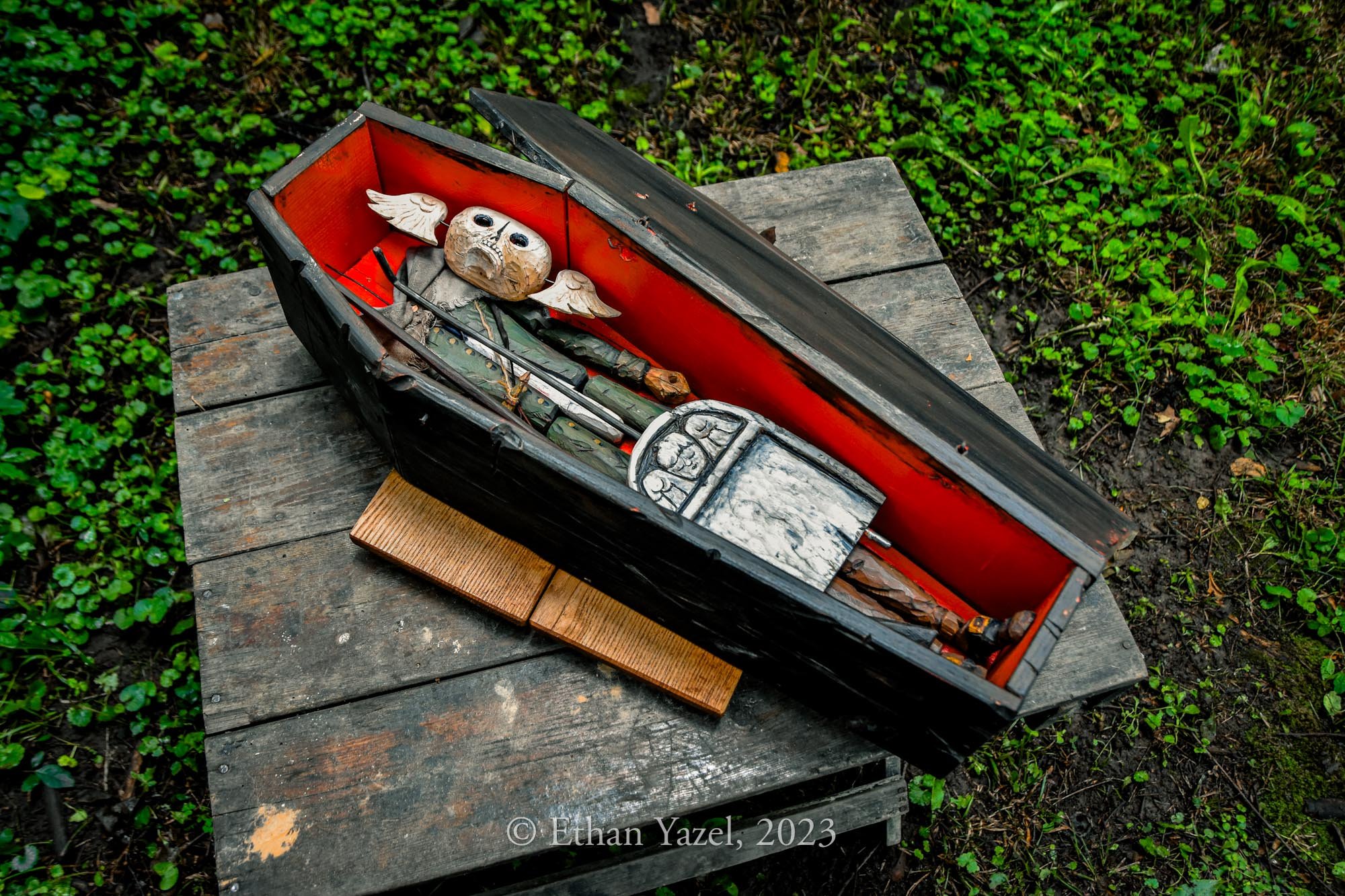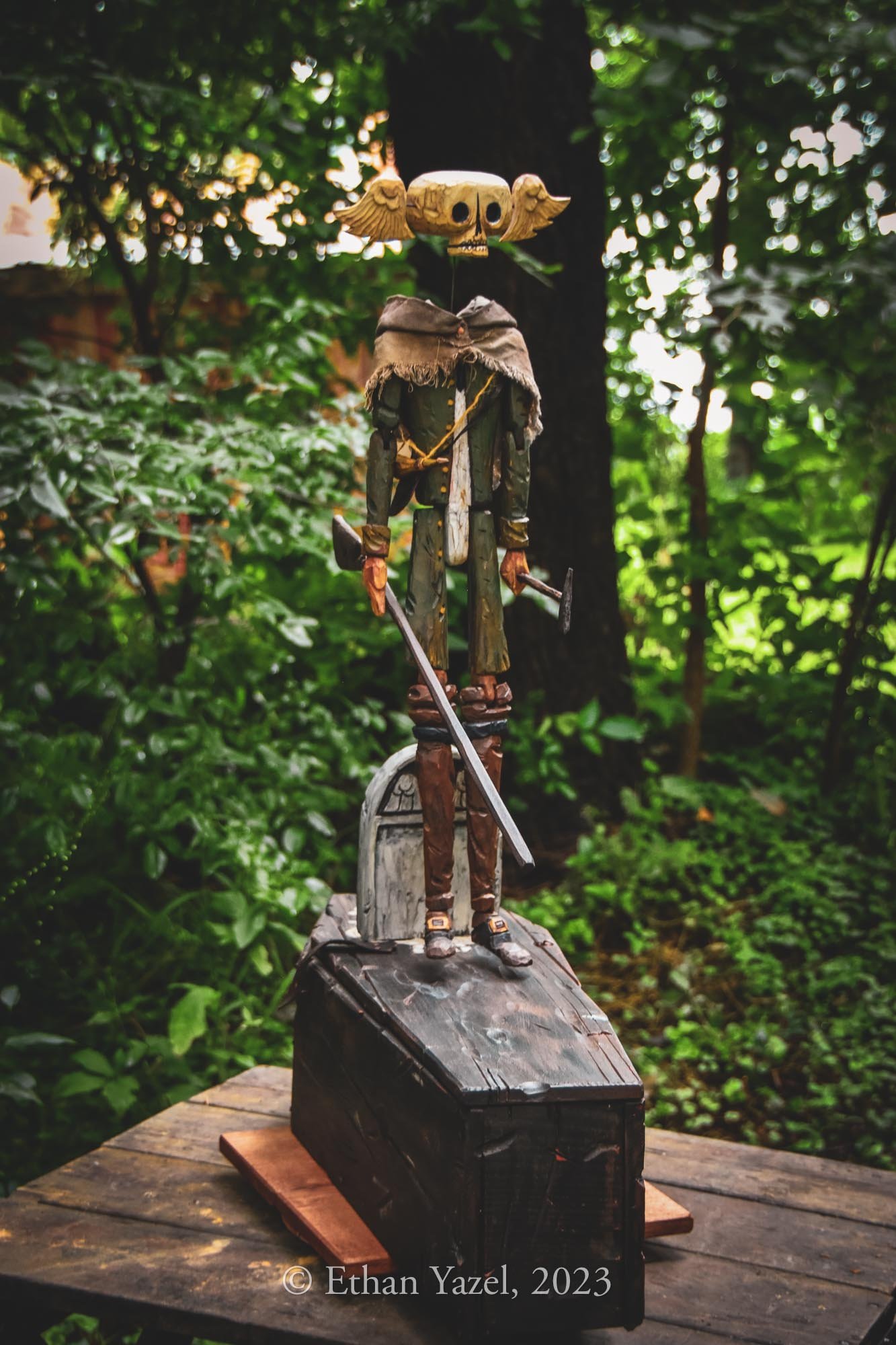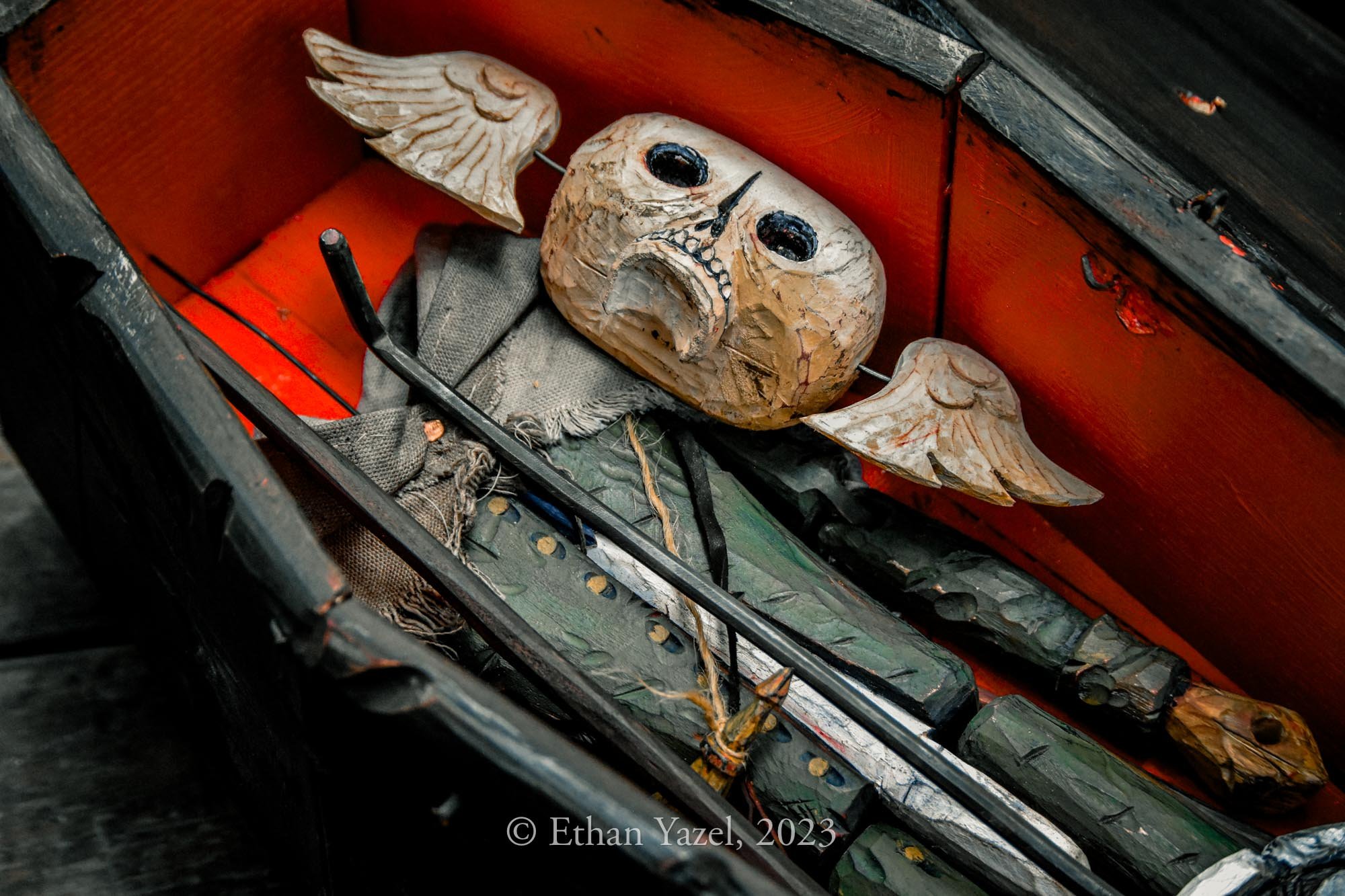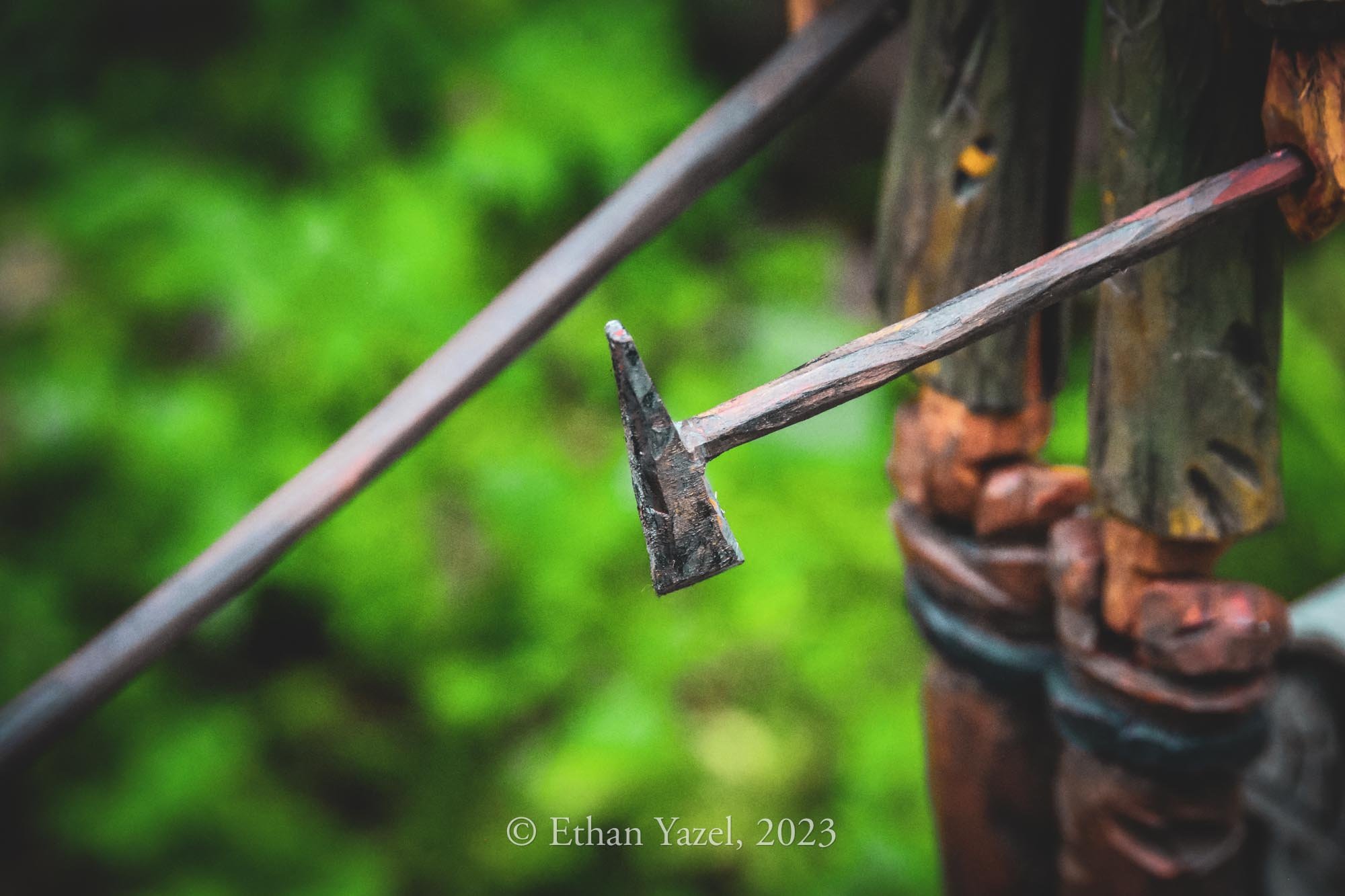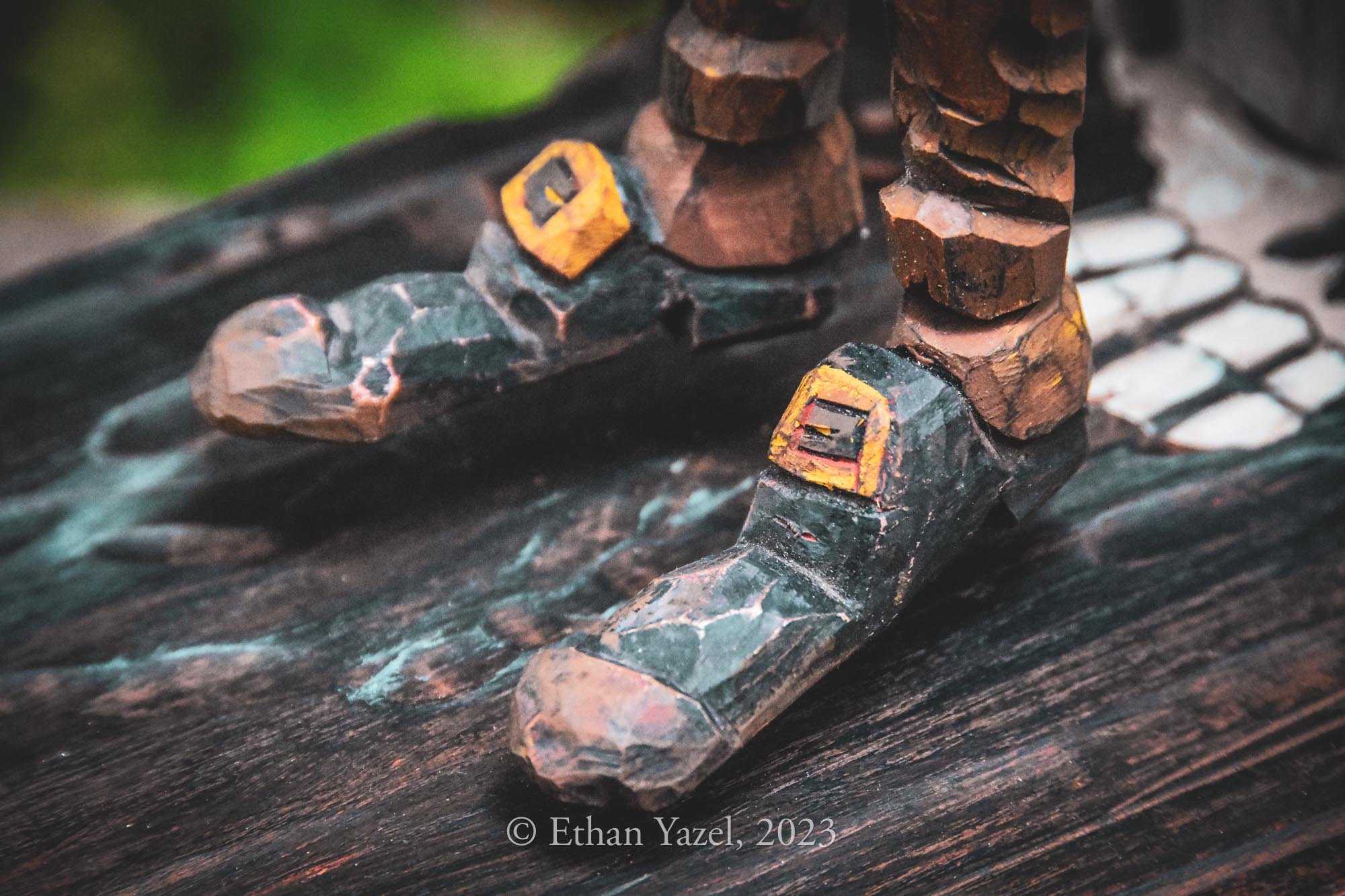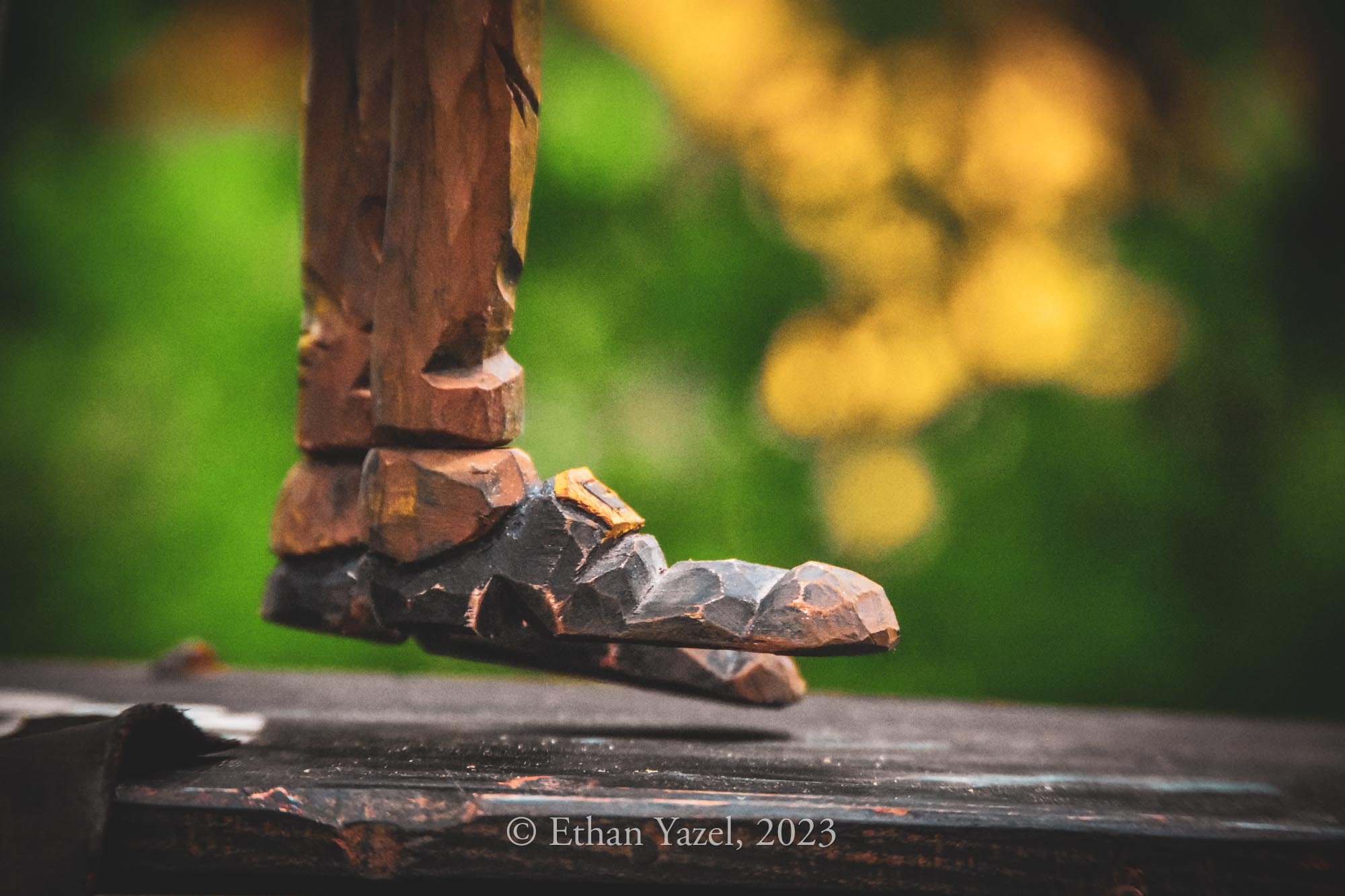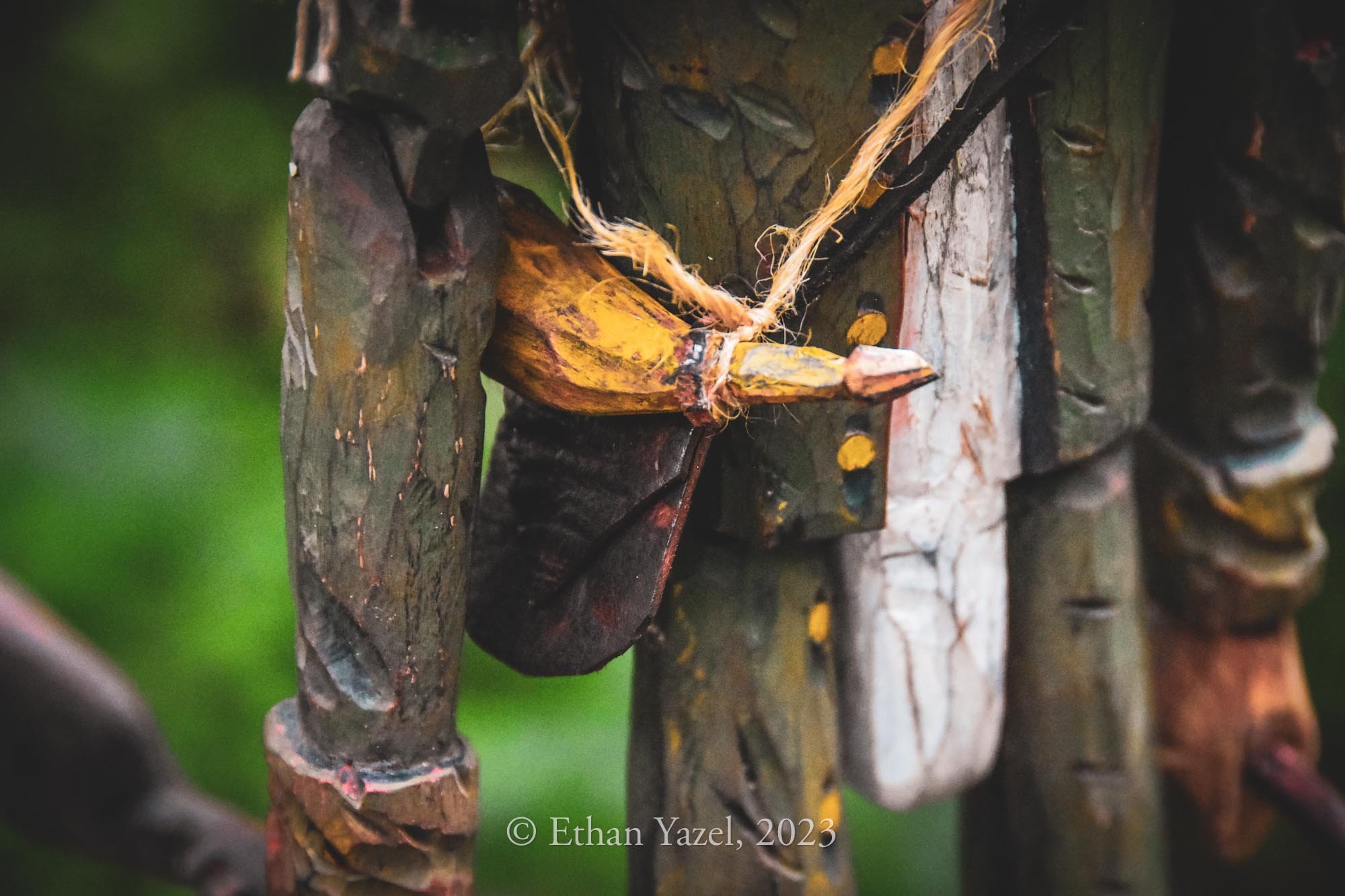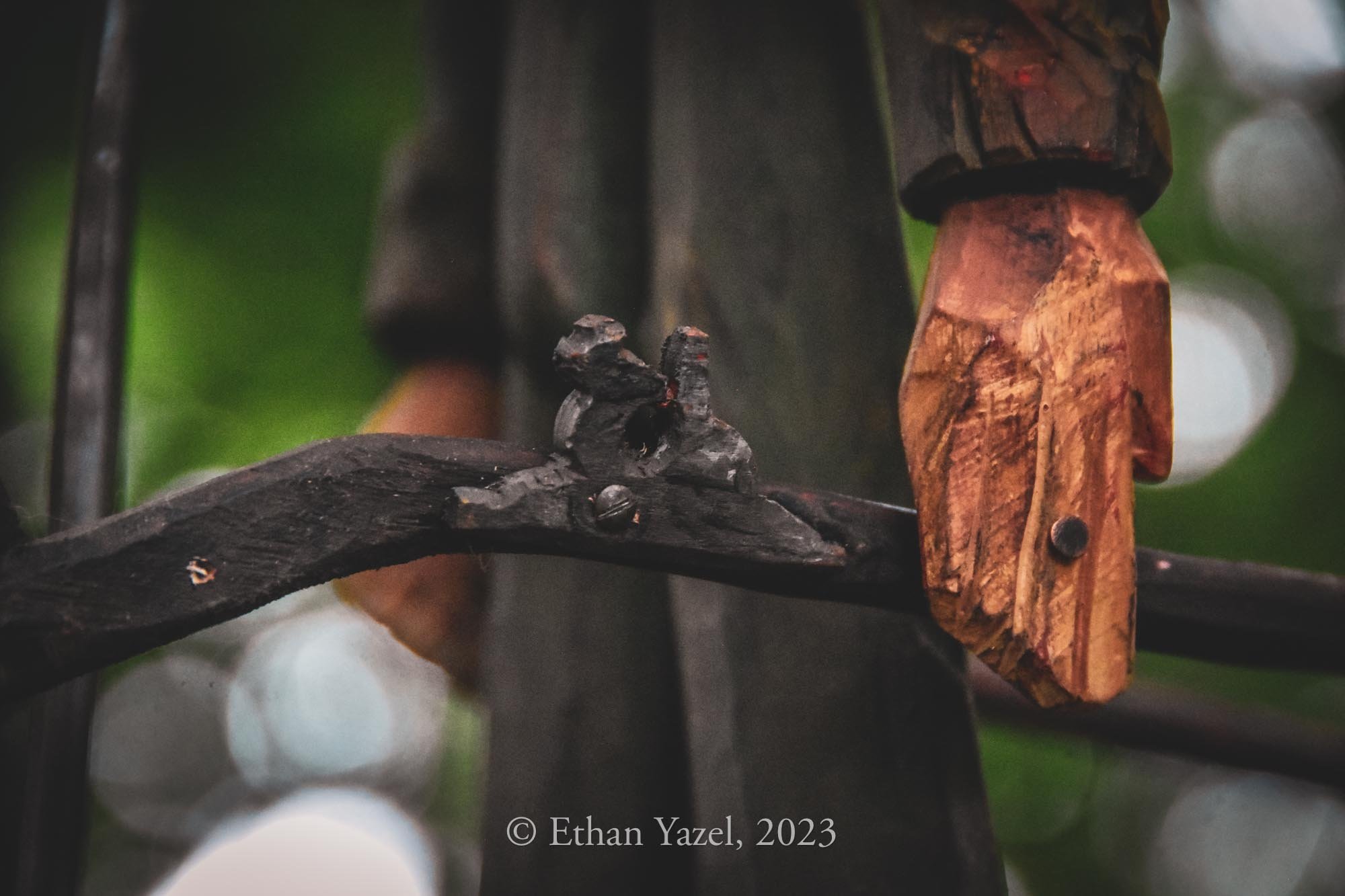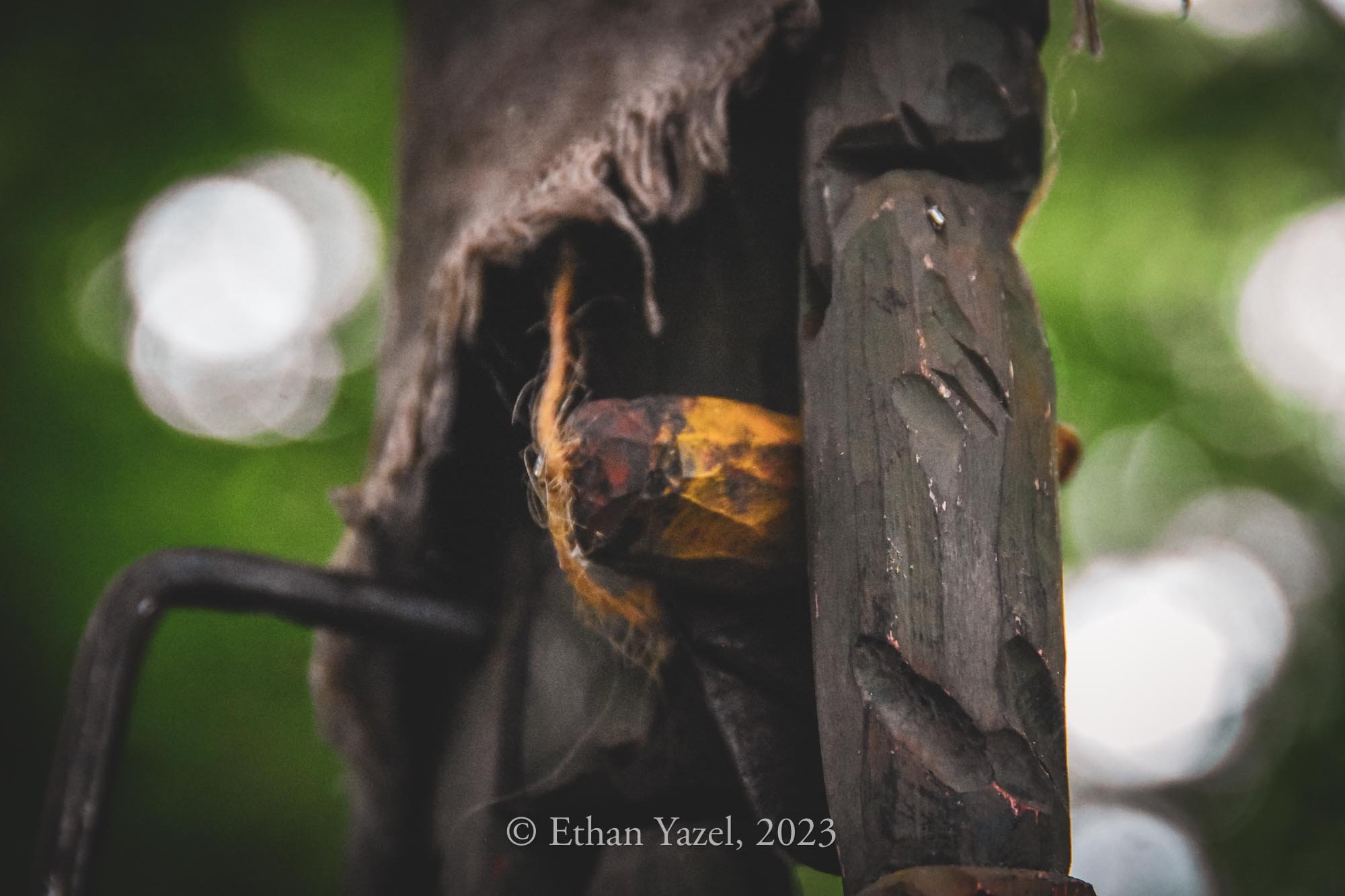Video, Carving and design © Ethan Yazel, 2023
Music: "Oh Death", by Dock Boggs, 1964
I’ve been studying early American artwork over this past year. The artwork created by the colonists is as fascinating to me as any fantasy world. Their world was uncomfortable and often brutal. Their possessions were needed to survive, but they were made as artfully as any contemporary artist would.
“Memento Mori” was a common notion on the frontier, illness, predators and seemingly endless war was always around the corner. Based on the representation of “Memento MorI” on folk art of the time, this drawing combines the lowly colonist with is flintlock rifle with modern notions of the “headless horseman”, or our modern representation of death with his cloak and scythe.
Studying more and more about early American art and how it portrayed, or we think it portrayed the culture of our forefathers. This research lead me to the concept of death, loss and morning and how it was portrayed in an era of much more hardship than any of us today could endure. One of the more permanent artforms we have left from colonial America is the gravestone. They have worn over time, but still give us wonderful insight into the lives of their owners, and the art of the era. I didn’t know it at the time, but this would become an eery primer for the year ahead.
It has been a long, hard year. Countless hours of thought about the state of the world has drained me of much more happiness than I care to admit. As I look back on the year I find comfort in the phrase repeated over all of the books, drawing, and gravestones I’ve studied.
“Memento Mori, ‘remember that you die”
It may sound or feel morbid, but this hasn’t always been a reminder of the end. Some of the earliest gravestones in the Eastern US remind us that this life is not eternal, that there is peace after we die. This idea is reflected in the stones, angels and cherubs float in the stones, with flowing robes and trumpets announcing the entrance of another soul into a world of no pain, no suffering. Fruit trees are in abundance, representing the tree of life, the garden of eden, and the cyclical nature of life and death.
It wasn’t until later, from my observations in the mid to late 1700s, when we saw some of the more contemporary portrayals of death, the morbid and perhaps scary ideas we see today. Trees and angels become smaller, giving way to bones and hourglasses. We see bats held back by angels, weeping flowers, and most prominently, the winged skulls that have inspired me here in 2023.
I find an odd peace in the artwork on these stones. The people beneath these stones were loved by someone, they lost loved ones themselves.
Perhaps this is just the rambling of a young man coming to terms with his mortality, maybe I’m assigning too much importance and connection to some 200-year-old carvings. I don’t really know, but for me at this time, there’s something important about these connections and the constant they represent- Memento Mori
